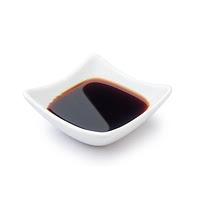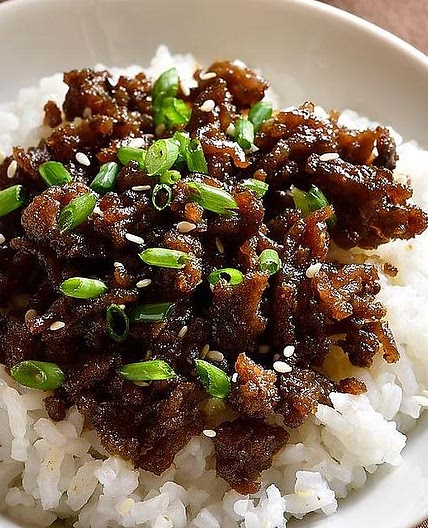Soy sauce
 Pantry
PantrySoy sauce, also known as soya sauce, is a dark, salty liquid with a robust flavor profile. It has a strong umami taste, or savoriness, which is one of the five basic tastes. Having originated in China during the Han dynasty over 2,000 years ago, soy sauce is one of the oldest condiments there is. From China, it spread to Japan, Korea, and other Asian countries before making its way across the globe. Soy sauce is a versatile ingredient in the kitchen. It can be used for dipping, stir-frying, sauteing, and marinating. Paired with a delicious sushi roll or stirred into fried rice, soy sauce adds a unique savory flavor to every food it touches. The traditional process of making soy sauce is quite lengthy. A mix of soybean, wheat, salt, and mold is aged from five to eight months before being pressed, pasteurized, and bottled. The faster method of producing soy sauce involves heating soybeans and mixing them with hydrochloric acid. Color, flavor, and salt are often added afterwards. This process can speed up production from several months to a few days, but often at the sacrifice of flavor and potentially harmful toxins that may be introduced during the process. When purchasing soy sauce at the grocery store, steer clear of soy sauce that includes ingredients like “hydrolyzed soy protein” or “hydrolyzed vegetable protein.” These are an indicator that the soy sauce was produced chemically rather than naturally. Traditionally produced soy sauce will be labeled as “naturally brewed” or “traditionally brewed” and the ingredient list will likely be limited to water, soybeans, wheat, and salt. Soy sauce can be stored in a pantry and doesn’t need to be refrigerated. All soy sauce is high in sodium. While sodium is an essential nutrient that our bodies need, too much sodium in our diet can lead to health risks like high blood pressure and heart disease. However, when consumed in moderation as part of a diet rich with whole foods, soya sauce is fine to consume.
Soy sauce nutrition and vitamin info per 100g
| Energy | 59.9900016784668 | kcal |
| Total Fat | 0.10000000149011612 | g |
| Carbohydrate Total | 5.570000171661377 | g |
| Sugars | 1.7000000476837158 | g |
| Protein | 10.510000228881836 | g |
| Sodium | 5586 | mg |
| Fiber | 0.800000011920929 | g |
10000+ recipes to cook with Soy sauce
Next PageSoy sauce substitutes
- Regular substitute
Soy sauce equivalents and varieties
Soy sauce cooking tips
 Samsung Food
Samsung FoodSoy sauce can be used as braising liquid for meat or added in stews or soups. It is not affected by heat during cooking and can add brown color to your dishes.
 Samsung Food
Samsung FoodUse soy sauce instead of salt, it contains a lot of sodium and it will give additional umami kick.







